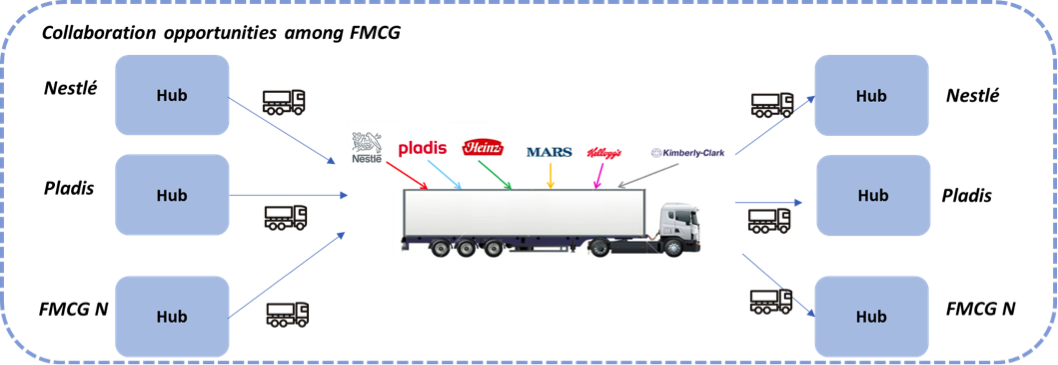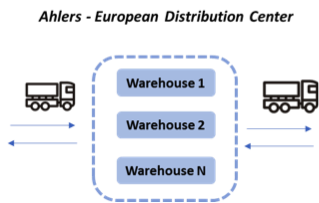LIVING LABS
LIVING LAB 1 – BACKHAULING AND CO-LOADING (NESTLÉ & PLADIS)
NESTLÉ and PLADIS have special interest on continuing previous research activities on the domain models of horizontal and co-loading collaboration, having reduced the running of empty vehicles by 270,000 kilometres per year since 2007. Currently there is a lack of a global view of the operations, which can lead to missed opportunities of collaboration. LOGISTAR will be fed with real information on different logistic operations in the area of distribution and warehousing of NESTLÉ and PLADIS in the UK. This testing case will be focused on showing how the information delivered by the decision-making tool developed in LOGISTAR can improve the backhauling management (the practice of not sending the cargo trucks back empty rather having them take some cargo back to the original source). The partners involved in this use case will be aware of all the legal aspects (in particular, anti-competition laws), and there may be a need for a trustee in place to enable companies to work collaboratively.

Location: The use case will take place in the logistics hubs of NESTLÉ in Bardon and PLADIS in Ashby de la Zouch which are both located near to each other in the middle of the UK.
The main actors involved: Partners: FMCG (NESTLÉ and PLADIS); Carrier (Various LSP’s plus own fleet
LIVING LAB 2 – SYNCHROMODALITY
Interporto of Verona (Italy) with 130 enterprises in their facilities, over 2.5M m2 of warehouses & terminals, has regular route connections by rail, sea and road on 3 TENT-T corridors (Baltic-Adriatic, Mediterranean, Scandinavian- Mediterranean) with a specific focus on North-South axis (Brenner Pass).

LOGISTAR system will be tested on the goods being transported between hubs, directly involving Interporto of Verona, and studying the various processes in the terminal, such as loading/ unloading, transshipment, bundling, among others. This testing case will be focused on showing how the information delivered by the decision-making tool developed in LOGISTAR can improve the logistic operations increasing the synchromodality. It’s remarkable the high commitment of Interporto of Verona for promoting the synchromodality, having in 2016 16.294 trains/year (54 per day); 13.452 intermodal trains (44 per day), having weekly routes, from/to Munchen, Hamburg, Hannover, Leipzig, Bremen, among others. In 2016, 28 million tons of goods were transported, 20 million by road and 8 million by rail.
LIVING LAB 3 – REAL TIME LOGISTICS IN CHEMICAL INDUSTRIES
CHEP has identified that there is a huge waste which is generated due to the waiting times at loading and unloading locations. In many occasions (depending on the length of haulage) trucks and drivers lose up to 40 % of their daily shift just waiting to get loaded or unloaded.
The Living Lab will be based at the Service Center in Fuenlabrada (Madrid area, Spain). Here CHEP manages daily around 50 loading and unloading operations moving around 32.000 pallets daily. At this location there are 6 areas for loading and unloading operations. Here, CHEP uses a static appointment scheduling tool as part of our BluJay TMS system which causes important delays and frustration among our driver community.

CHEP has experienced that multi-party planning and collaboration can only be successful if vehicle timeslots are respected and turnaround time at the pallet depots are minimized. This is only possible if live and accurate vehicle ETA (Estimated Time of Arrival) data is integrated with the network planning system.
In this new Living Lab, CHEP wants to develop and test the use of its real-time positioning and order planning data to feed the LOGISTAR system, so as to calculate an accurate ETA of its vehicles and enable re-planning between different network nodes. This Living Lab will address and prevent cascading transport delays between the pallet network nodes that currently are a big impediment for LTL horizontal collaboration (i.e. freight consolidation) at the hub site.
